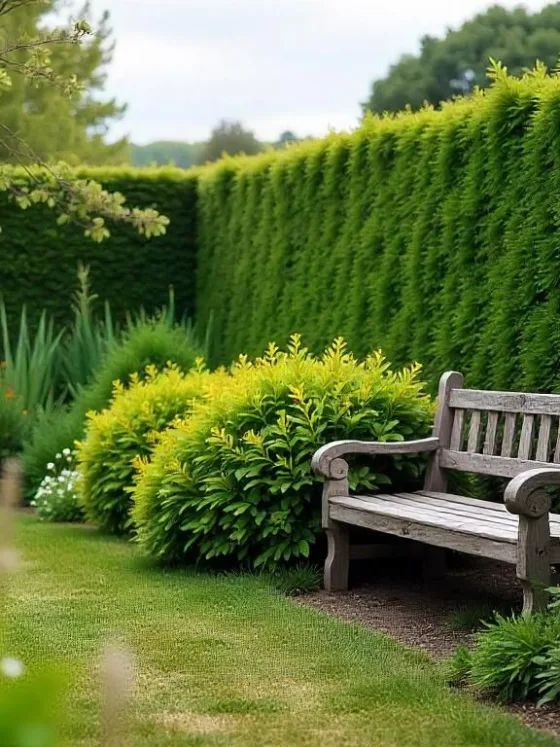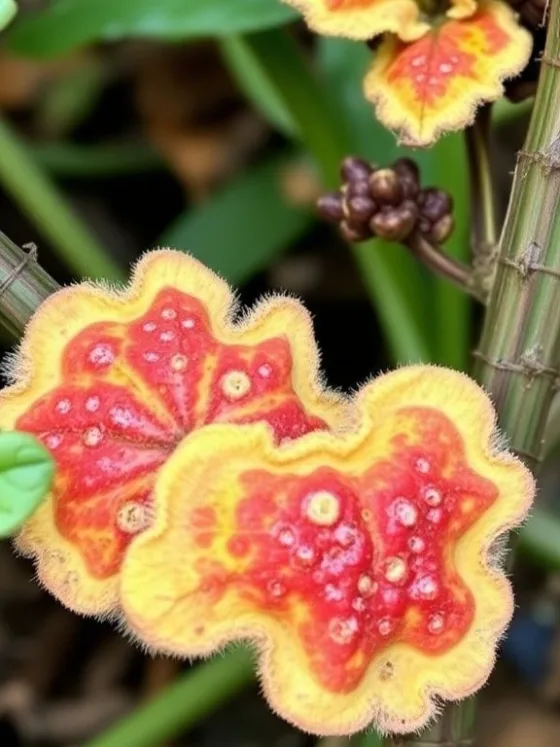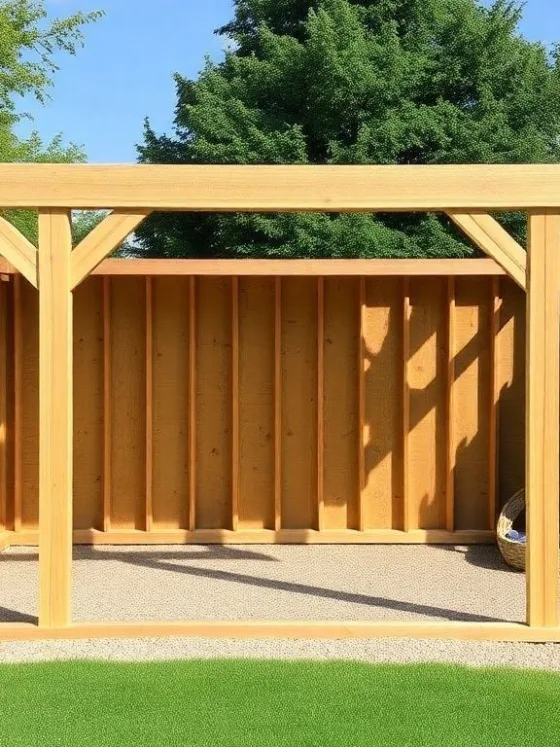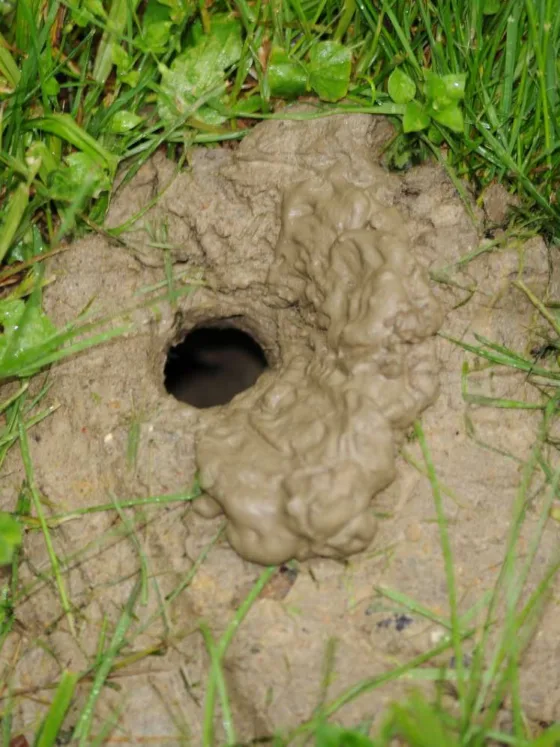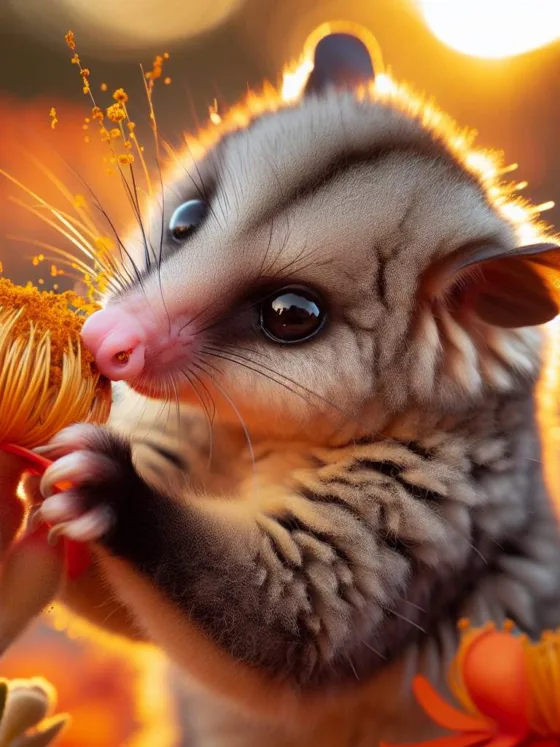Table of Contents Show
Introduction
In our ever-evolving urban landscapes, a surprising trend has emerged – urban beekeeping. This practice involves maintaining a honeybee hive apiary within city limits, transforming rooftops, balconies, and small backyard spaces into buzzing sanctuaries for our winged friends.
The Importance of Urban Beekeeping
Bees are nature’s most industrious pollinators, playing an essential role in our food systems. A garden visited by bees is a thriving one, with increased crop yields, vibrant flowers, and an overall boost in plant health.
Urban beekeeping brings these pollination benefits right to your doorstep, enhancing the biodiversity of your garden and contributing to a healthier local ecosystem.
The Role of Urban Beekeeping in Conservation
With global bee populations under threat from habitat loss, disease, and pesticides, every hive counts. By hosting a hive in your city dwelling, you can provide a safe haven for these crucial creatures and help ensure their survival.
Why You Should Consider Urban Beekeeping
Aspiring urban beekeepers will find that this rewarding hobby is more accessible than one might expect. It requires some learning and dedication but the benefits for both your garden and the broader environment are well worth it.
Join us on this exploration of urban beekeeping as we delve into how you can integrate bees into your garden for better pollination. Your journey towards becoming an urban beekeeper begins here.
The Importance of Beekeeping in Urban Areas
Urban beekeeping, also known as urban apiculture, has become increasingly popular in cities. This modern take on an ancient practice is not just a passing trend but a vital part of supporting local ecosystems. Beekeeping in cities has the potential to make a positive impact on the environment despite the dominance of buildings and infrastructure.
How Beekeeping Helps Urban Ecosystems
Urban areas are often seen as lacking in nature and green spaces. However, when beehives are introduced, rooftops, balconies, and community gardens can turn into thriving centers of biodiversity. These urban bee farms contribute to:
- Pollination Services: Bees are hardworking pollinators, crucial for plants’ reproduction. By moving pollen from one flower to another, they help fruits and seeds grow.
- Biodiversity: Bees’ pollination activities enable a wide range of plant species to thrive, increasing genetic diversity among urban flora.
- Improvement of Green Spaces: Parks and gardens in cities benefit greatly from having bees around. More pollination leads to healthier plants and more colorful landscapes.
The Role Bees Play in Urban Gardens
The significance of bees in supporting urban agriculture cannot be overstated. They are important allies for:
- Food Production: Many urban gardens rely on bees to pollinate vegetables and fruit-bearing plants, resulting in higher yields and better-quality produce.
- Ornamental Gardens: Flowers in ornamental gardens depend on pollinators like bees to reproduce. This leads to more abundant and diverse displays of flowers that enhance the beauty of cityscapes.
- Maintenance of Ecological Balance: Bees help keep ecological balance by supporting various plant species, which also benefits other wildlife such as birds and insects.
By embracing honeybees into our cities, we invite nature’s top pollinators to sustain not only our gardens but also our parks and shared green spaces. As urban areas expand, there is a growing need to incorporate natural processes like pollination into city planning. Urban beekeeping is where human creativity meets nature’s efficiency, creating mutually beneficial relationships that enrich both our lives and the environment we live in.
There is still much to learn about how these buzzing residents are integrated into urban settings, and the exploration of this symbiotic relationship holds great promise for the future.
Getting Started with Urban Beekeeping
Urban beekeeping offers a unique opportunity to contribute to biodiversity while also reaping the rewards of your own honey harvest. It begins with understanding the essentials of setting up an apiary, maintaining the health of your honeybees, and managing common challenges that urban beekeepers face.
Building and Managing Your Honeybee Hive Apiary in the City
Choosing an appropriate location for your urban beehive is crucial. Bees need a safe, quiet place where they can fly freely without disturbing neighbors or pedestrians. A rooftop, balcony, or secluded corner of a garden can serve as an excellent location. Keep in mind that bees prefer morning sunlight and afternoon shade. Also, consider accessibility for routine hive inspections and honey harvesting.
The right type of beehive plays a significant role in successful urban beekeeping. Langstroth hives are often recommended for beginners due to their simplicity and ease of management. However, other types like top-bar or Warre hives can also work well in urban settings.
Sourcing honeybee colonies responsibly is vital. Local beekeeping associations often sell nucleus colonies (or ‘nucs’), which are small honeybee colonies created from larger colonies. These nucs come with their own queen, making them an ideal choice for beginners.
Once you have your bees and hive ready, it’s time to install the bees into their new home. This process should be done calmly and gently to minimize stress on the bees.
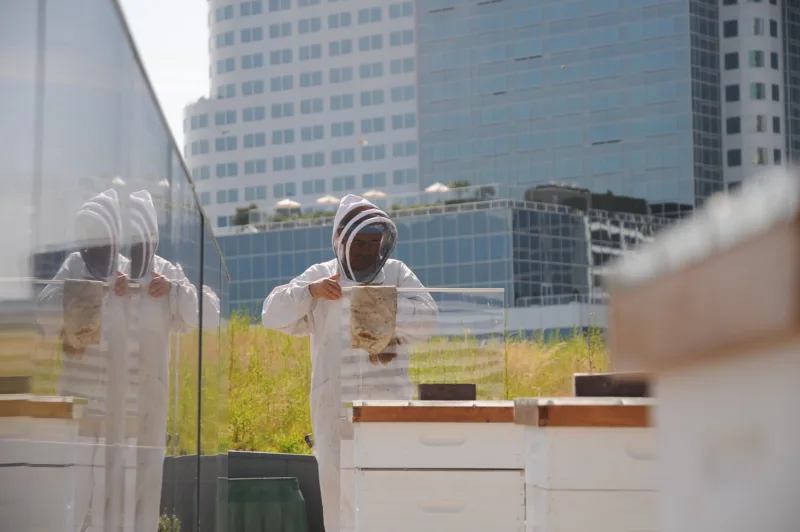
Addressing Concerns about Bee Health
Promoting bee health is integral to successful urban beekeeping practices. Common diseases such as American foulbrood or Nosema can pose serious threats to your hive’s wellbeing.
American foulbrood is a bacterial disease that kills bee larvae, while Nosema is a fungal infection that impacts adult bees’ digestive systems. Regular hive inspections can help identify these diseases early on, enabling prompt treatment and minimizing colony damage.
Pesticides pose another significant risk to urban bees. These chemicals can contaminate nectar and pollen, leading to harmful effects on bee health and longevity.
To mitigate this risk, encourage responsible pesticide use in your local community. Advocate for the use of organic pest control methods and the planting of pesticide-free plants in gardens and green spaces. Additionally, providing your bees with a diverse range of native, pesticide-free flora can help ensure they have access to clean sources of nectar and pollen.
Creating a garden oasis using canvas prints in your outdoor area is another great way to personalize your space while supporting biodiversity. Canvas prints can showcase your favorite images, inspiring quotes, or beautiful artwork, adding a touch of personality to your urban beekeeping haven.
Furthermore, soil rehabilitation is essential for maintaining a healthy ecosystem. By adopting organic practices like composting and avoiding chemical fertilizers, you can bring your soil back to life and create a thriving environment for both your bees and plants.
YouTube Video | Suburban Beekeeping – Where to put your bee hives
Integrating Bees into Gardens for Enhanced Pollination
The Role of Bees in Pollinating Urban Gardens
Urban gardens are not just patches of greenery; they form the backbone of city ecosystems, offering vital floral resources for a variety of pollinators. Among these, bees play an indispensable role in the process of garden pollination, bridging the gap between plants and production. The symbiosis between bees and flowers is a cornerstone for achieving a bountiful urban harvest, which feeds both humans and the local bee populations.
To foster a thriving urban garden that supports this essential relationship, consider these strategies:
Plant Diversity
Cultivate a selection of plants that bloom at different times of the year to provide a consistent food source for bees. This ensures that your garden offers an array of pollen and nectar throughout the seasons.
Native Species
Incorporate native plants into your garden design. These species have evolved alongside local bees and are often more attractive to them as sources of nourishment.
Pesticide-Free Practices
Adopt organic gardening methods to protect bees from harmful chemicals. If pest control is necessary, opt for natural solutions that pose minimal risk to pollinators.
By implementing these practices, urban gardeners cultivate an environment where bees can thrive alongside human activity, bolstering local food production through enhanced pollination.
Benefits of Integrating Bees into Your Garden
The inclusion of honeybee hive apiaries within urban gardens isn’t merely about honey production; it’s a strategic move towards sustainable urban living. Here are some tangible benefits:
Increased Crop Yields
The presence of bees can significantly enhance fruit and vegetable output. Their diligent pollination activities ensure that plants achieve full fertilization, leading to more abundant harvests.
Improved Quality
Beyond quantity, pollination by bees often results in superior-quality produce. Well-pollinated plants tend to yield fruits and vegetables that are larger and more uniform in shape.
Floral Magnificence
A bee-friendly garden is likely to experience a more vibrant display of flowers. Bees help with the propagation of various plant species, encouraging a diverse and colorful floral tapestry.
In addition to ecological gains, there’s a wealth of social enrichment to be had:
- Learning Opportunities: A public or shared honeybee hive apiary becomes a living classroom for all ages. It offers hands-on learning about ecology, biology, and the importance of pollinators.
- Community Connection: Beekeeping acts as a focal point for community engagement. Gardeners, neighbors, and local schools can come together in stewardship over these essential creatures.
For those looking to delve deeper into effective landscape design that complements beekeeping efforts, exploring foundation gardens provides insight into integrating aesthetic appeal with functional planting strategies.
And if you’re at the stage of conceptualizing your garden space around your new apiary venture or wish to redesign with pollinators in mind, understanding your landscape needs is crucial. For guidance on preparing to design your landscape, read on.
Gardeners who embrace these principles not only contribute positively to their immediate environment but also join a collective effort toward supporting urban ecosystems. In doing so, they ensure that cities remain vibrant habitats for both humans and bees alike—each playing their part in nurturing life amidst concrete landscapes.
Harvesting Honey and Ensuring Hive Health
Urban beekeeping has multiple rewards, including the sweet satisfaction of harvesting your own honey. Yet, it calls for a dedicated approach to maintaining hive health, which is vital to a successful harvest. Here, we delve into responsible honey harvesting and hive management techniques.
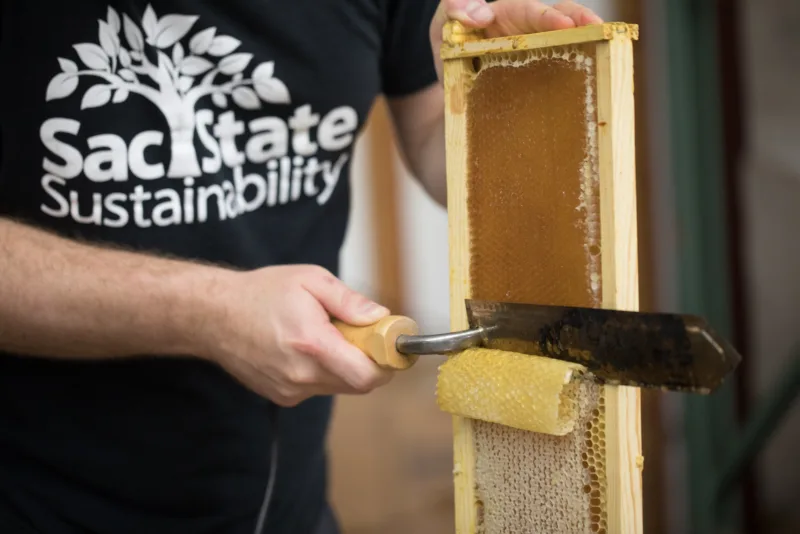
Responsible Honey Harvesting and Hive Management in Urban Beekeeping
Harvesting honey from your urban hive can be a rewarding experience. However, it’s essential to balance the needs of the beekeeper with those of the hive for sustainable and responsible beekeeping practices.
- Regular Hive Inspections: The well-being of a honeybee colony heavily relies on regular hive inspections. These checks are crucial to monitor signs of disease, pests, or queen issues. Therefore, beekeepers should make inspections part of their routine care.
- Optimal Timing: Experienced beekeepers understand that timing is everything when it comes to honey harvesting. The goal is to maximize yield while considering the well-being of the bees. It’s also essential to leave enough honey for the bees to survive through winter or periods of dearth.
To conduct these inspections effectively, consider these steps:
- Inspect Regularly but Don’t Overdo It: Too frequent checks can stress out your bees and disrupt their work.
- Look for Signs of Disease or Pests: Monitor for mites, beetles, and wax moths, among other threats.
- Check the Queen’s Presence: Look for eggs or young larvae as proof that the queen is present and functioning properly.
- Evaluate Food Stores: Ensure there’s adequate honey and pollen stored for your bees.
- Examine Brood Patterns: Irregular brood patterns could indicate problems with your queen or disease.
Remember that every inspection intervenes in the natural processes of the bees; hence it’s critical to keep them minimal yet effective.
Dealing with Potential Challenges in Urban Beekeeping
Like any other hobby or venture, urban beekeeping has its fair share of challenges. A common issue revolves around the controversy of the Flow Hive, a technological innovation in beekeeping that has sparked heated debates.
Promoting Sustainability and Ethics in Urban Beekeeping Ventures
While the Flow Hive offers convenience with its easy honey harvesting mechanism, it raises questions about prioritizing bee welfare over convenience or profit. Critics argue that it encourages a honey profiteering mentality and “lazy” beekeeping practices, such as inadequate pest management or lack of ongoing education and skill development.
Beekeeping is not just about honey production; it’s a commitment to supporting these vital pollinators. As urban beekeepers, we need to be aware of our practices’ potential risks and continually strive for sustainable and ethical approaches.
Managing pests effectively is critical for hive health. Here are some tips:
- Regular Inspections: Keep an eye out for signs of pests during your routine hive checks.
- Hygienic Practices: Keeping your apiary clean can prevent pest infestations.
- Natural Treatments: Consider natural pest treatments before resorting to harsh chemicals that could harm your bees.
Continuous learning and skill development are also essential parts of being a responsible beekeeper. Stay updated with the latest research findings, join local beekeeper associations, or take part in online forums to enhance your knowledge and skills.
In conclusion, urban beekeeping is an enriching journey that requires dedication, patience, and continuous learning. It’s not just about reaping the sweet rewards but also about ensuring the welfare of our buzzing friends and contributing to our local ecosystems’ well-being. So let’s put on those veils, light up those smokers, and step into the fascinating world of bees.
The Impact of Urban Beekeeping on Bee Health and Native Pollinators
Supporting Healthy Bees and Biodiversity through Urban Beekeeping Efforts
Urban beekeeping can significantly influence honeybee health and genetic diversity. According to recent studies, urban environments offer a diverse range of flowers, leading to a broad diet for bees. This diversity not only strengthens the genetic makeup of honeybees but also improves their immunity against diseases.
Interaction between honeybees and native pollinators in urban settings is another noteworthy aspect. Honeybees often share their habitat with other wild bees such as solitary bees and bumblebees. These interactions contribute to a vibrant ecosystem that benefits both honeybees and native pollinator species.
Maintaining Pollen Availability for Thriving Wild Bee Communities
Pollen availability plays a critical role in the survival and growth of bee populations. In cities, green spaces like public parks, gardens, and even individual yards can serve as significant sources of pollen. Planting diverse flowering plants across these spaces throughout the year ensures that bees have access to pollen regardless of the season.
Honeybees are not the only beneficiaries; wild bee communities also thrive due to increased pollen availability. Supporting these wild bees is crucial since they often pollinate specific plants that honeybees cannot, thereby contributing to biodiversity.
Role of Urban Dwellers in Creating Bee-Friendly Cityscapes
Urban dwellers hold the key to creating more bee-friendly cityscapes. By adopting sustainable beekeeping practices, they can directly contribute to healthier bee populations:
- Careful management of hives
- Responsible use of pesticides
- Regular monitoring for diseases
- Providing safe habitats for bees
Furthermore, urban residents can transform their gardens into mini sanctuaries for bees by planting a variety of flowering plants. Such initiatives not only benefit the bees but also beautify the cityscape and provide an educational opportunity for individuals interested in nature and conservation efforts.
By understanding the profound impact of urban beekeeping, it becomes clear that we can all play a role in supporting healthier bee populations and promoting biodiversity. This understanding serves as a stepping stone towards creating a more sustainable, bee-friendly urban environment.
Conclusion
There’s an undeniable beauty in the symbiotic relationship between bees and gardens. The magic of this relationship becomes even more pronounced within the concrete jungle, where every bit of greenery counts. Engaging in urban beekeeping not only enhances your garden’s productivity but also contributes significantly to pollinator conservation.
Let’s envision our urban spaces buzzing with life, with bees darting from flower to flower, enriching our gardens with their industrious pollination. This vision is not far from reach if you decide to embark on the journey of urban beekeeping. Let this not be a mere concept but a call for action, an invitation to experience firsthand the benefits of integrating bees into your garden.
Urban environments present unique challenges for bee populations. Yet, they also hold immense potential for fostering coexistence between humans and these industrious insects. The quest is to transform our increasingly urbanized world into a sanctuary for bees, where they can thrive alongside us.
Embracing urban beekeeping is a step towards that transformation. It carries profound implications not just for enhancing garden pollination, but also for conserving our precious pollinators. Let’s remember that our actions today will determine the future health of our ecosystems.
With every hive we install, every flower we plant, and every pesticide we avoid, we are making a positive impact on bee conservation. By doing so, we are also enriching our own lives by yielding healthier crops and creating vibrant, pollinator-friendly spaces within our cities.
The journey may seem daunting at first but remember that the smallest actions can make the biggest difference. Start small, learn as you go along, and let nature guide you on this rewarding path of urban beekeeping.
FAQs (Frequently Asked Questions)
[saswp_tiny_multiple_faq headline-0=”h3″ question-0=”What is the importance of urban beekeeping?” answer-0=”Urban beekeeping is important for better pollination in urban landscapes. Bees are nature’s most industrious pollinators, playing an essential role in the ecosystem.” image-0=”” headline-1=”h3″ question-1=”How does urban beekeeping contribute to conservation?” answer-1=”With global bee populations under threat from habitat loss, urban beekeeping plays a crucial role in conservation efforts by providing safe spaces for bees to thrive.” image-1=”” headline-2=”h3″ question-2=”Why should one consider urban beekeeping?” answer-2=”Aspiring urban beekeepers will find that this rewarding hobby not only contributes to the environment but also provides an opportunity to harvest honey and support biodiversity.” image-2=”” headline-3=”h3″ question-3=”What role do bees play in pollinating urban gardens?” answer-3=”The significance of bees in supporting urban agriculture can’t be overstated. Bees play a vital role in pollinating urban gardens, leading to increased crop yields and improved quality of produce.” image-3=”” headline-4=”h3″ question-4=”How can one get started with urban beekeeping?” answer-4=”Urban beekeeping offers a unique opportunity to contribute to the environment. To get started, one should consider building and managing a honeybee hive apiary in the city while addressing concerns about bee health.” image-4=”” headline-5=”h3″ question-5=”What impact does urban beekeeping have on bee health and native pollinators?” answer-5=”Urban beekeeping significantly influences honeybee health and supports biodiversity. It also plays a role in maintaining pollen availability for thriving wild bee communities, ultimately creating more bee-friendly cityscapes.” image-5=”” count=”6″ html=”true”]Citation
- Benbow, Steve. 2012. The Urban Beekeeper. Random House.
- Hughes, Craig. 2010. Urban Beekeeping. Good Life Press.
- Greeny, Mona. 2020. Backyard Homesteading. Independently Published.
- Luke, Janet. 2011. Green Urban Living.
- Paska, Megan. 2014. The Rooftop Beekeeper. Chronicle Books.
- ABC Australia. 2023. ‘How to become a bee keeper… even if you live in the city 🐝🏣 | ABC Australia.’ YouTube video, 19:00:14. https://www.youtube.com/watch?v=Nc0yBolVTew. Accessed January 6, 2024.
- FieldCraft Survival Channel. 2022. ‘Urban Beekeeping | Where do I start? | Intro to Homestead.’ YouTube video, 1:23:45. https://www.youtube.com/watch?v=lqIxpVx4w3Y. Accessed January 6, 2024.
- The Bush Bee Man. 2020. ‘Urban Beekeeping for Beginners: Backyard Beekeeping using a Flow Hive Set Up.’ YouTube video, 17:00. https://www.youtube.com/watch?v=LkCZcyQY_OE. Accessed January 6, 2024.
- BBC Earth Unplugged. 2016. ‘How do bees find food in the city? Urban Beekeeping and Hive Mind: | BBC Earth Unplugged.’ YouTube video, 11:32. https://www.youtube.com/watch?v=ql3m9CCrBHw. Accessed January 6, 2024.




